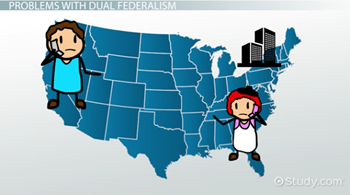Dual Federalism Explained

Introduction to Dual Federalism

Dual federalism is a concept in political science that describes the relationship between the federal government and the states in a federal system. In this system, power is divided between the federal government and the states, with each level of government having its own distinct areas of authority. This division of power is designed to prevent any one level of government from becoming too powerful, federalism, government structure, political science.
Key Features of Dual Federalism

The key features of dual federalism include a clear division of power between the federal government and the states, with each level of government having its own areas of exclusive authority. This division of power is typically outlined in a constitution or other founding document, dual federalism features, division of power, constitution. Some of the main areas of authority typically reserved for the federal government include foreign policy, national defense, and interstate commerce, while the states typically have authority over areas such as education, transportation, and law enforcement.
Advantages and Disadvantages of Dual Federalism

Dual federalism has several advantages, including promoting local autonomy and allowing for more flexibility in responding to regional needs and preferences. However, it also has some disadvantages, such as potentially leading to inefficiencies and conflicts between different levels of government, dual federalism advantages, dual federalism disadvantages. Additionally, dual federalism can make it more difficult to address national problems that require a coordinated response.
📝 Note: It's worth noting that the specifics of dual federalism can vary significantly from one country to another, depending on the details of their constitution and system of government.
Examples of Dual Federalism in Practice

There are several examples of dual federalism in practice around the world, including in countries such as the United States, Canada, and Germany. In these countries, the federal government and the states or provinces have distinct areas of authority, and there are mechanisms in place to resolve conflicts and coordinate policy, dual federalism examples, federal systems, government structures.
In summary, dual federalism is a system of government in which power is divided between the federal government and the states, with each level of government having its own areas of authority. While it has several advantages, it also has some disadvantages, and its specifics can vary significantly from one country to another, dual federalism summary, government systems, political science concepts.
What is dual federalism?
+Dual federalism is a system of government in which power is divided between the federal government and the states, with each level of government having its own areas of authority.
What are the advantages of dual federalism?
+The advantages of dual federalism include promoting local autonomy, allowing for more flexibility in responding to regional needs and preferences, and preventing any one level of government from becoming too powerful.
What are some examples of dual federalism in practice?
+Examples of dual federalism in practice include the United States, Canada, and Germany, where the federal government and the states or provinces have distinct areas of authority.



